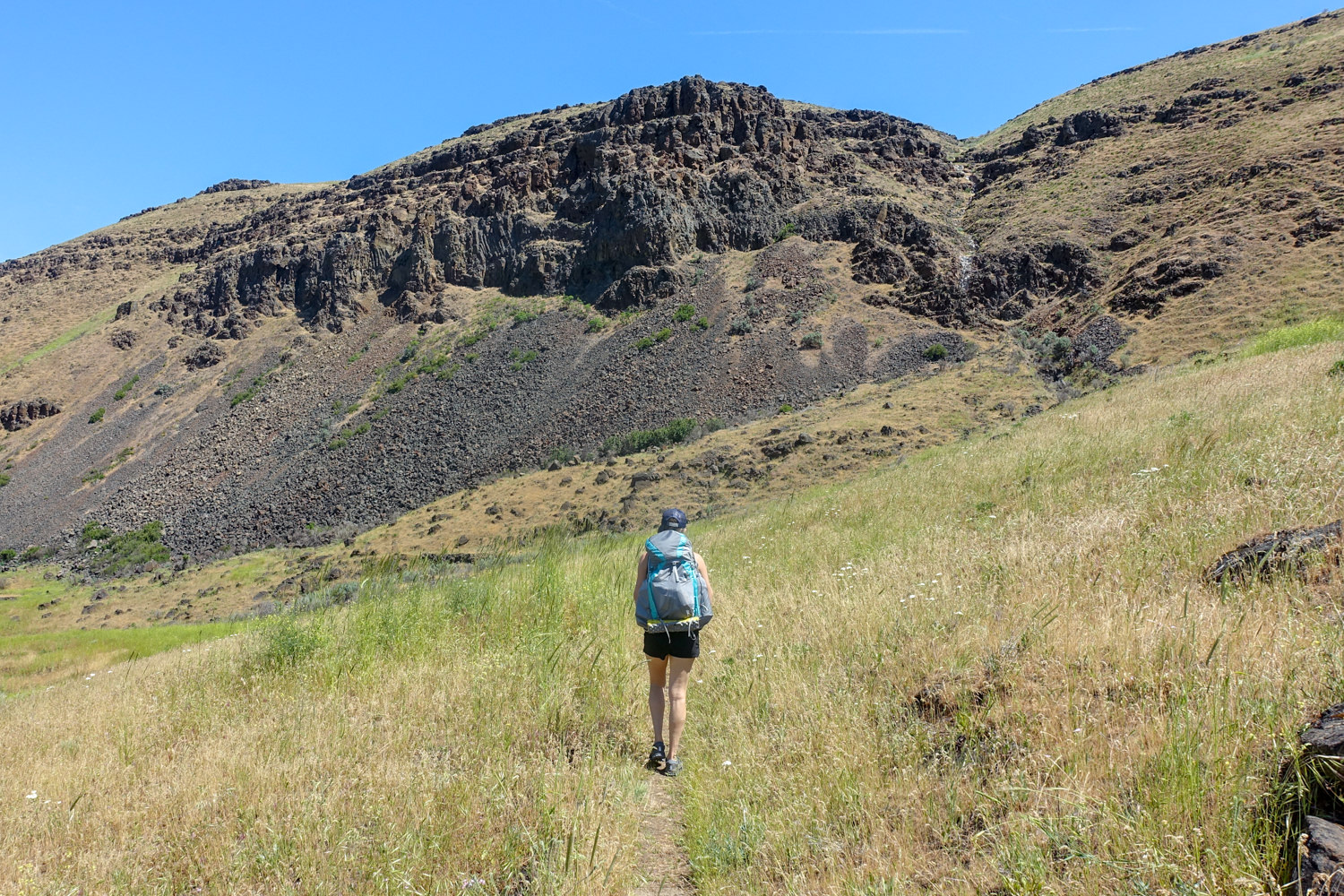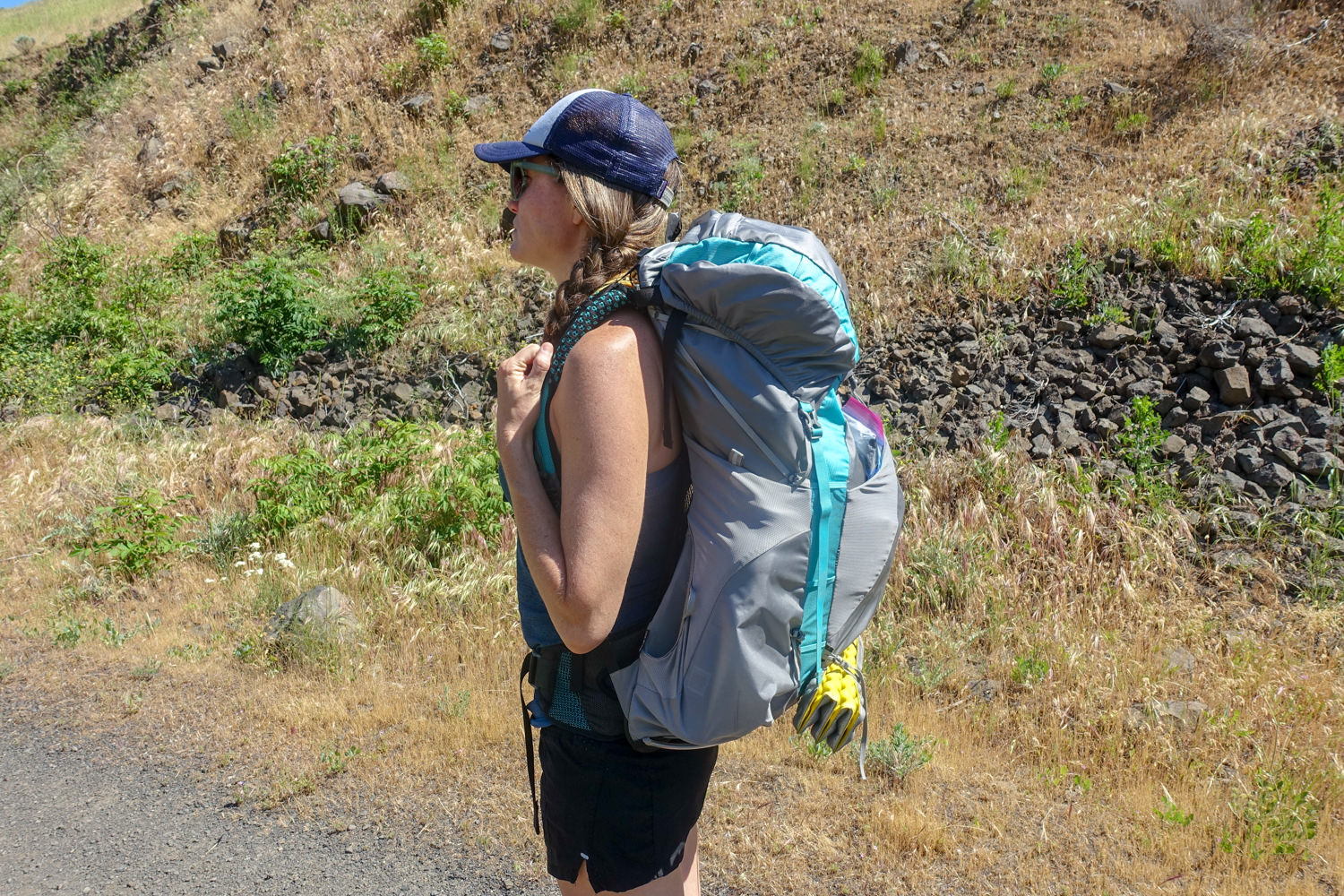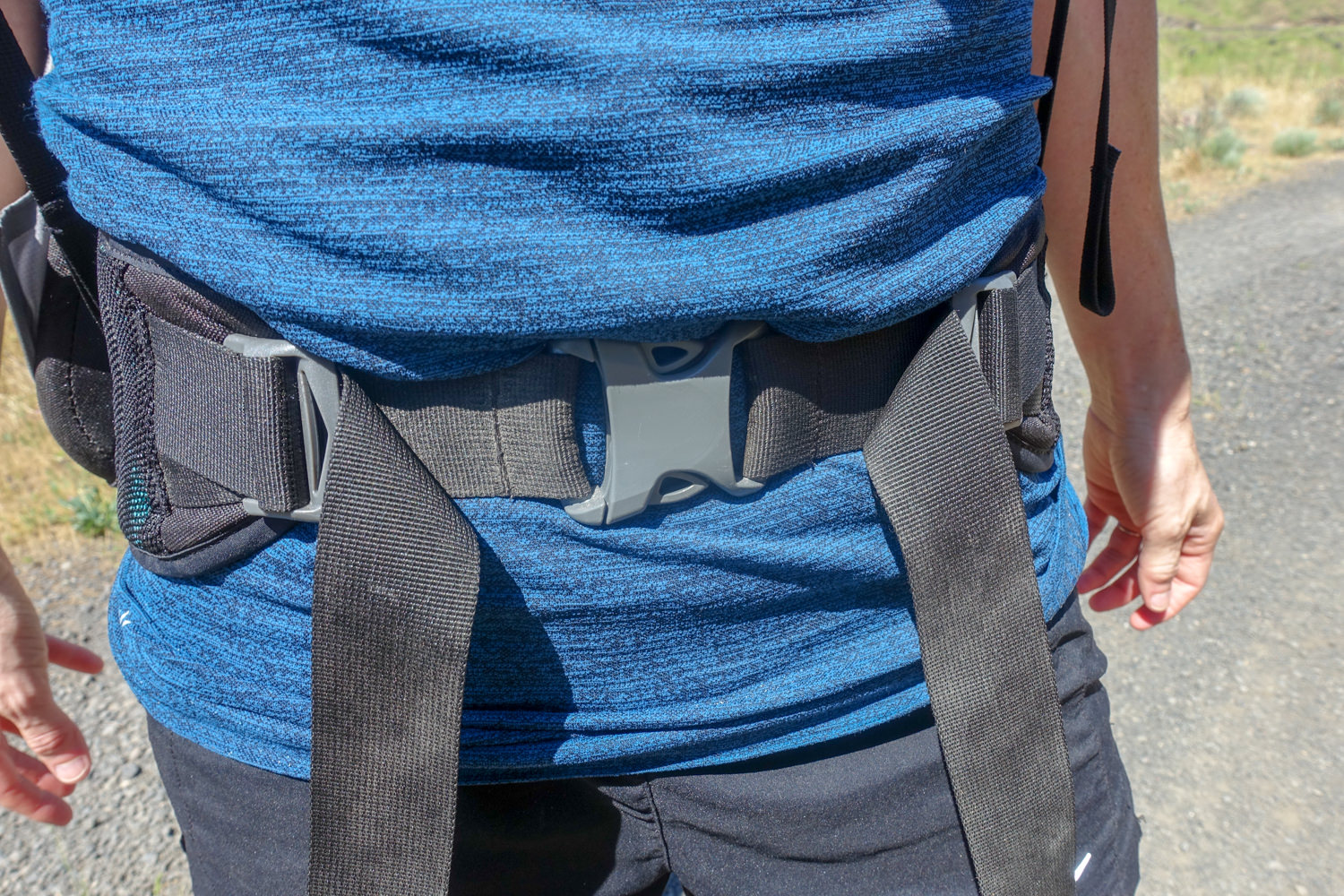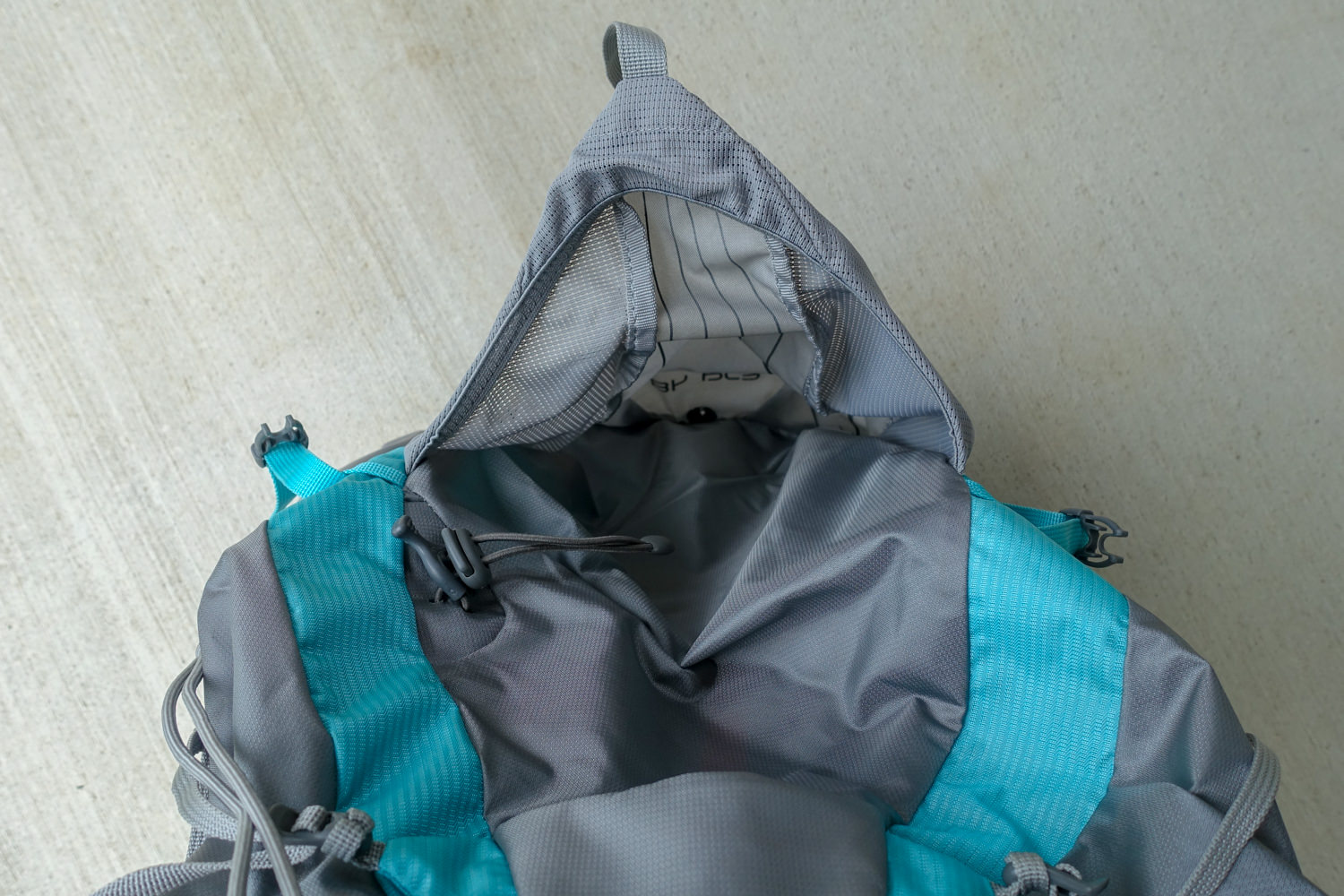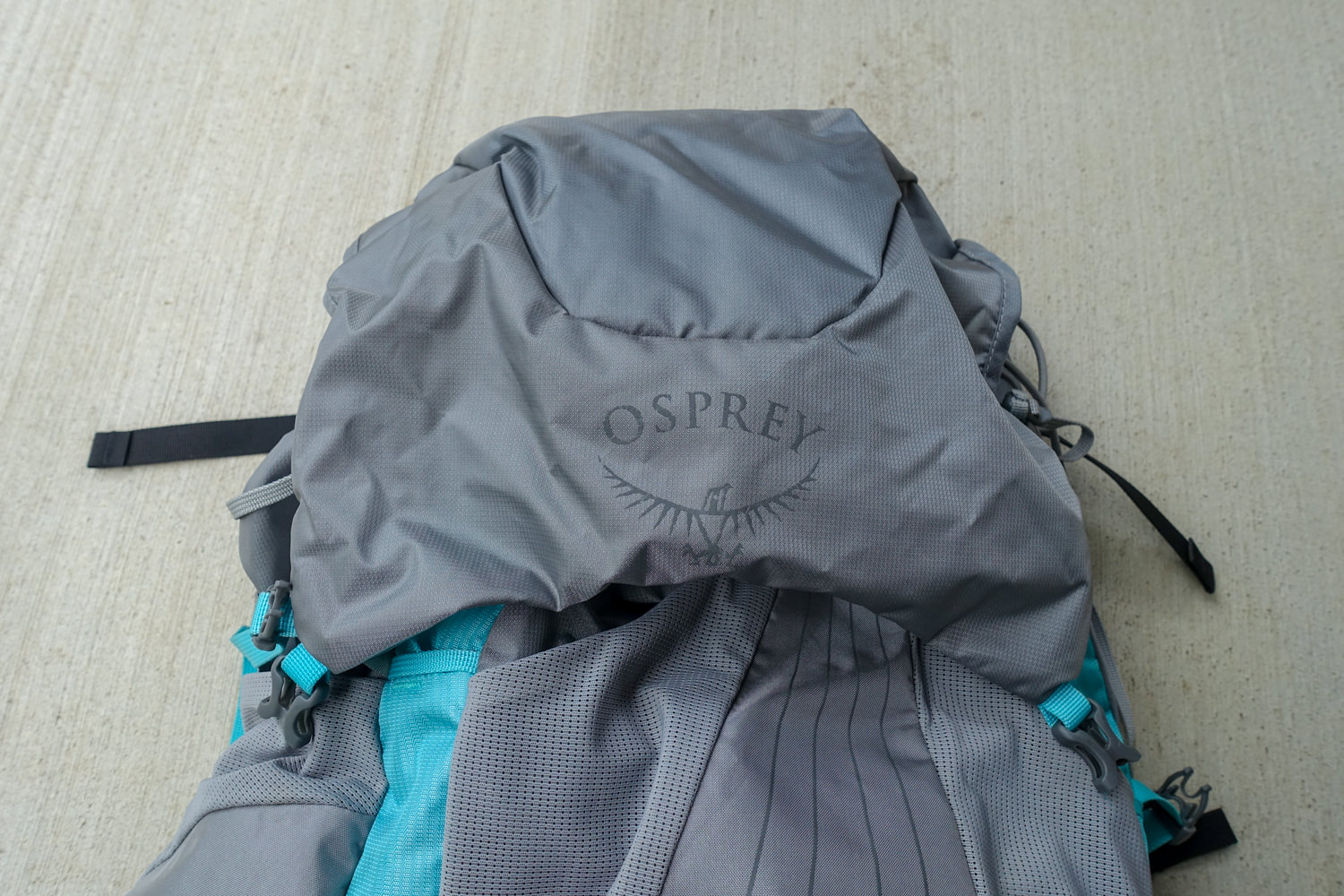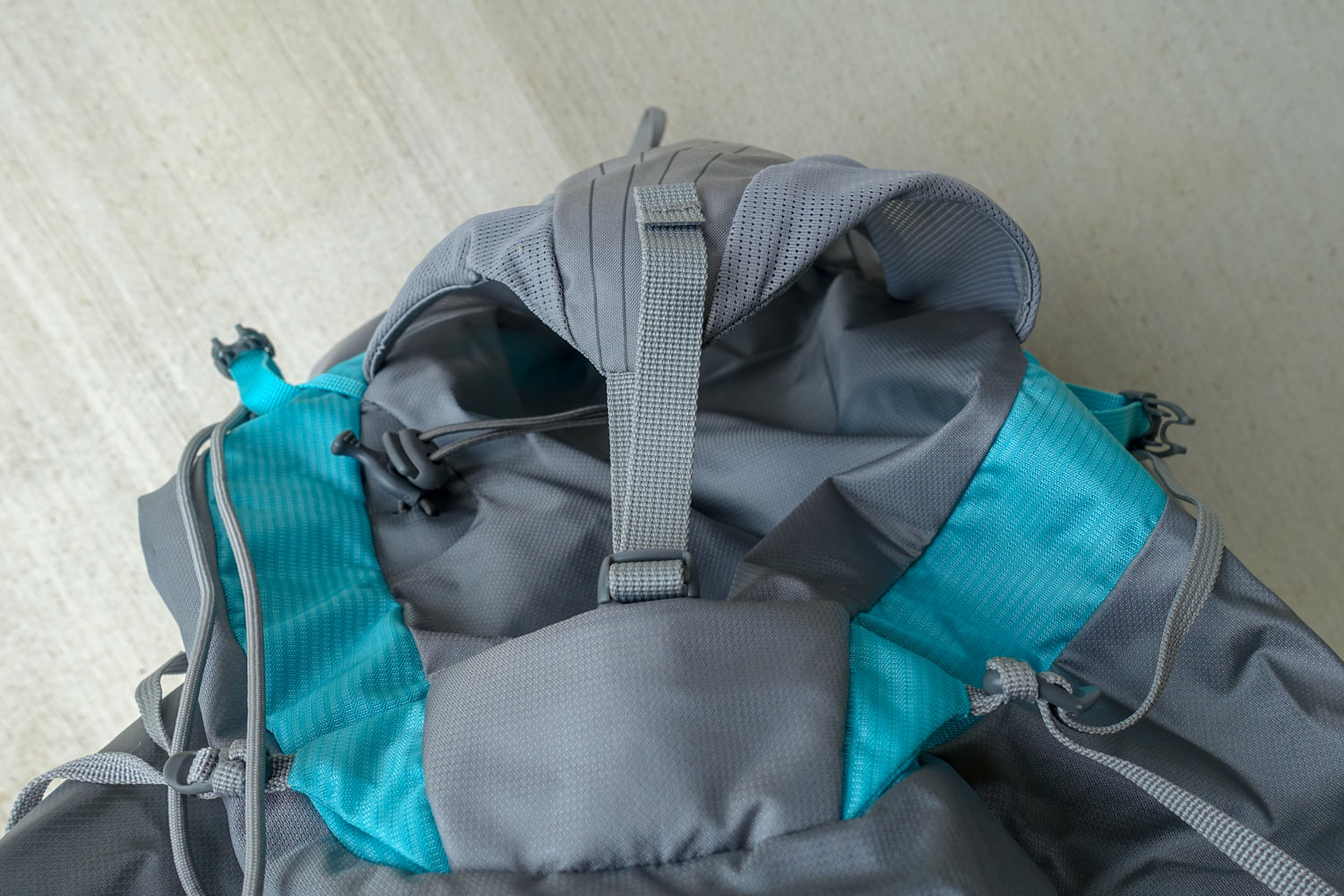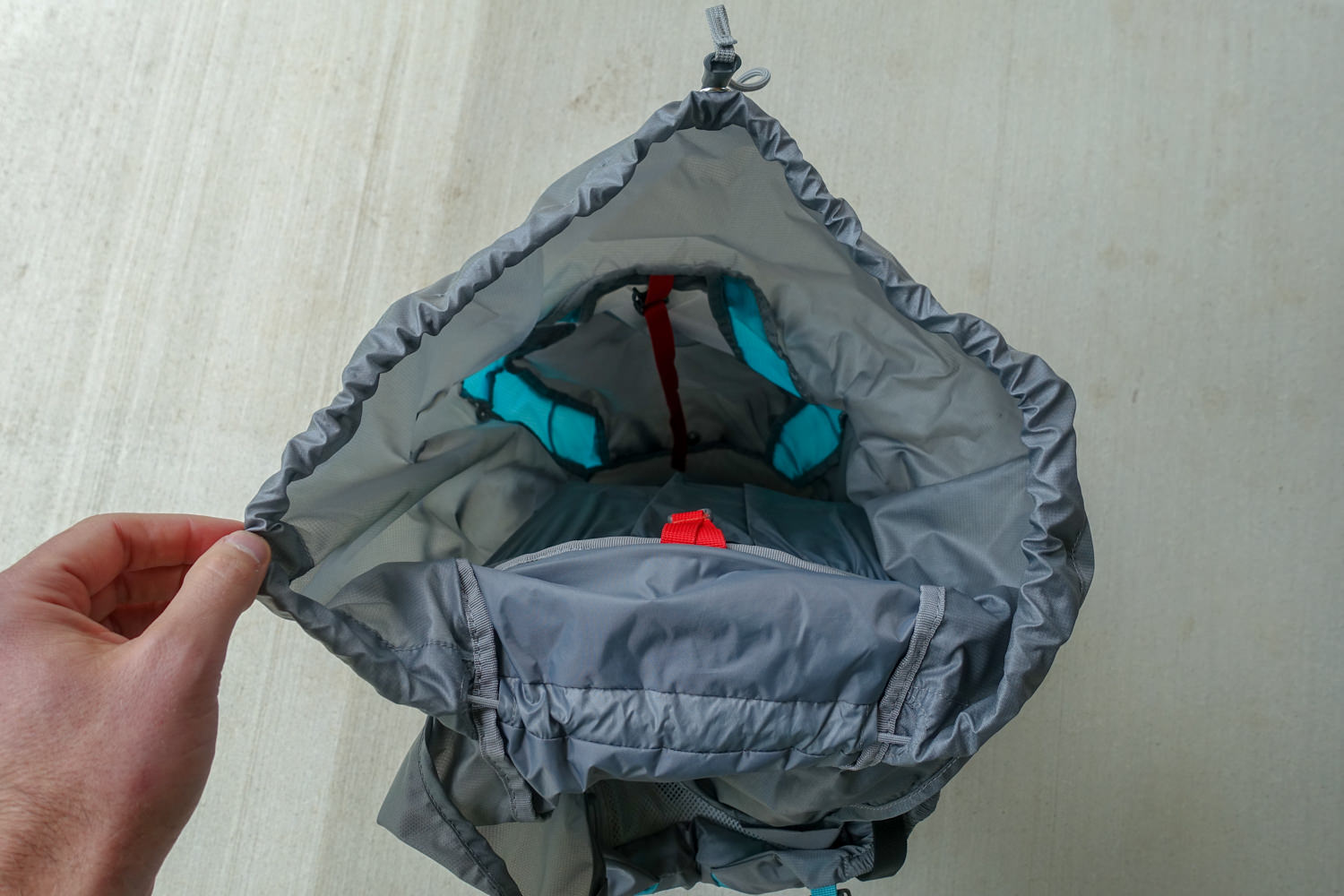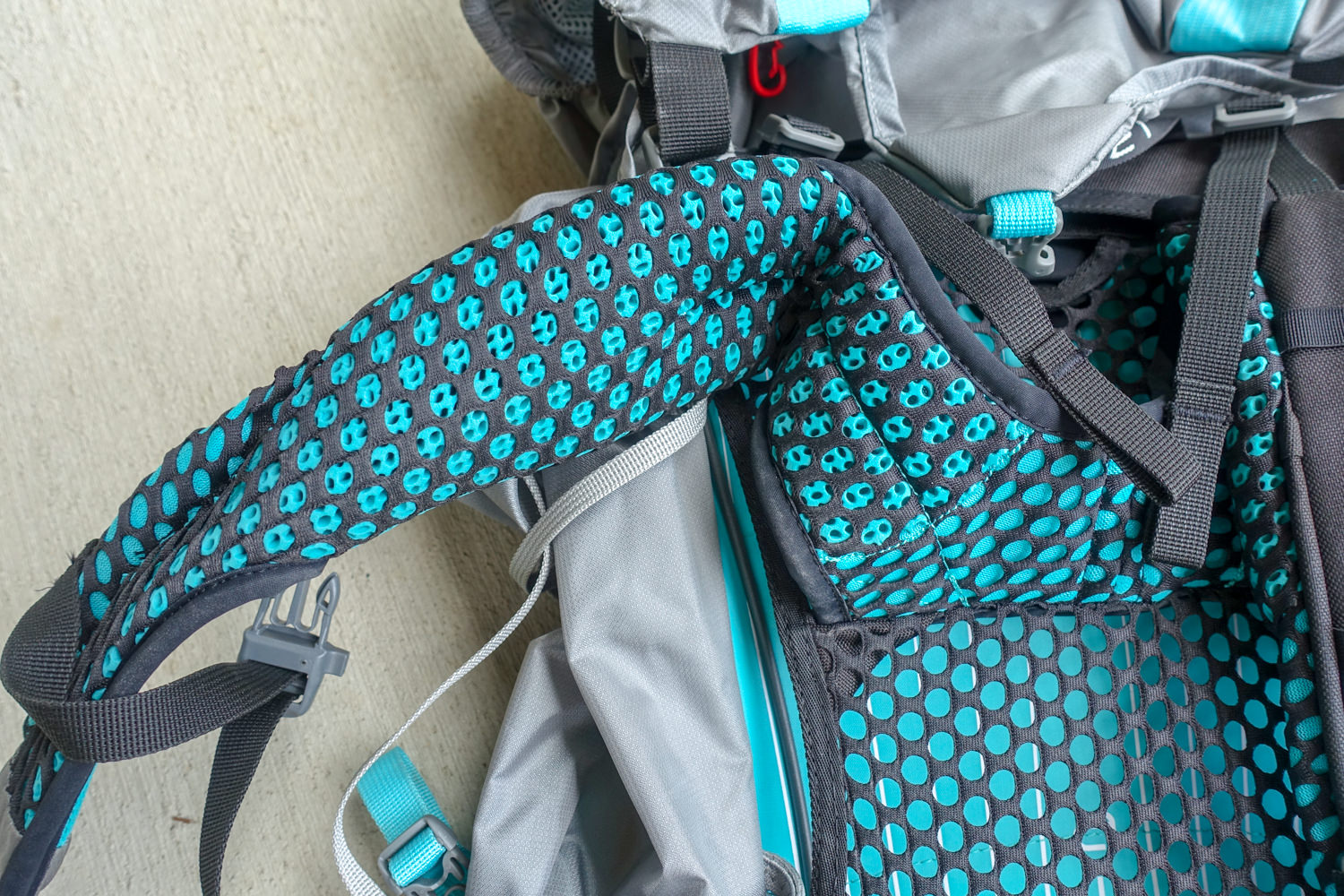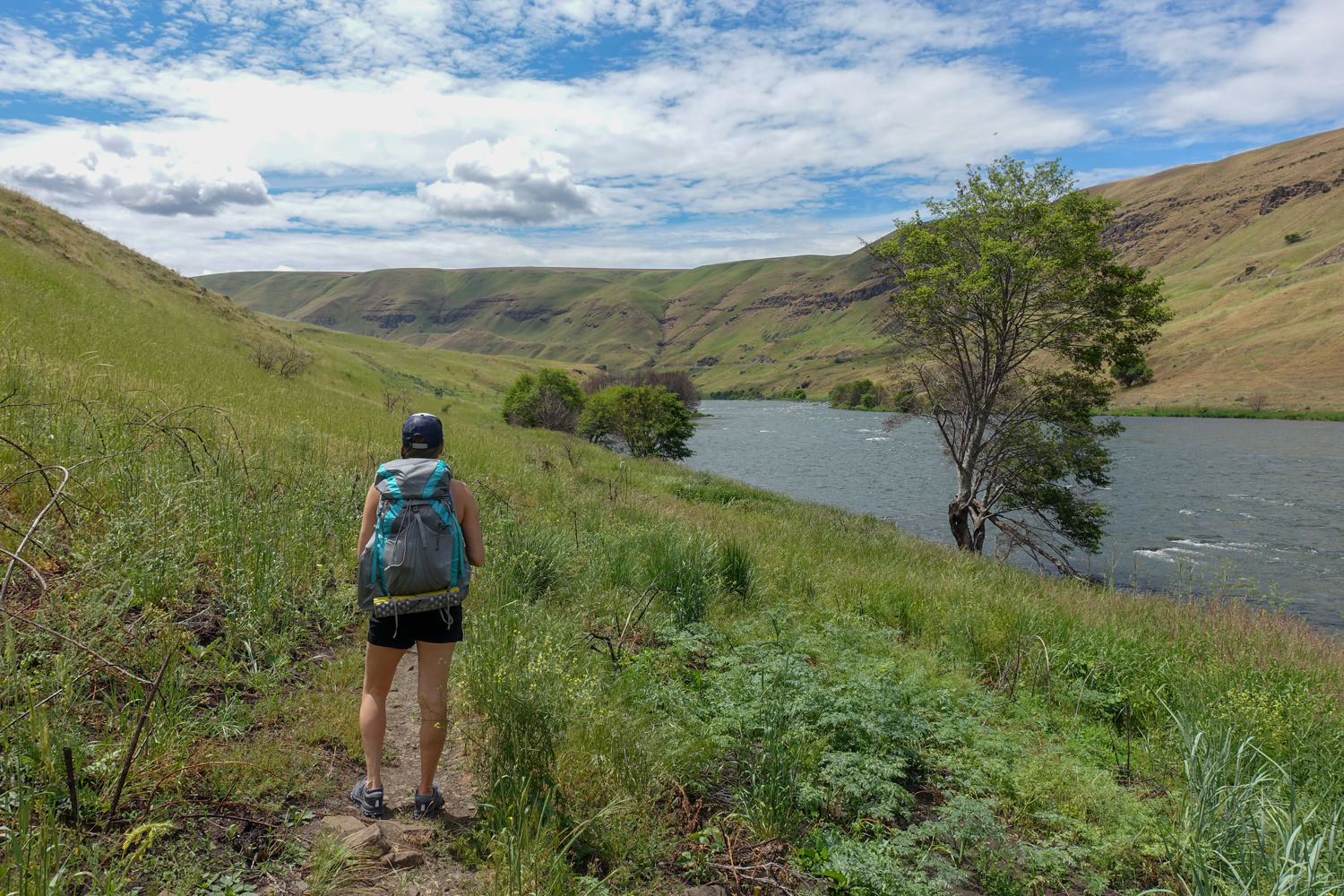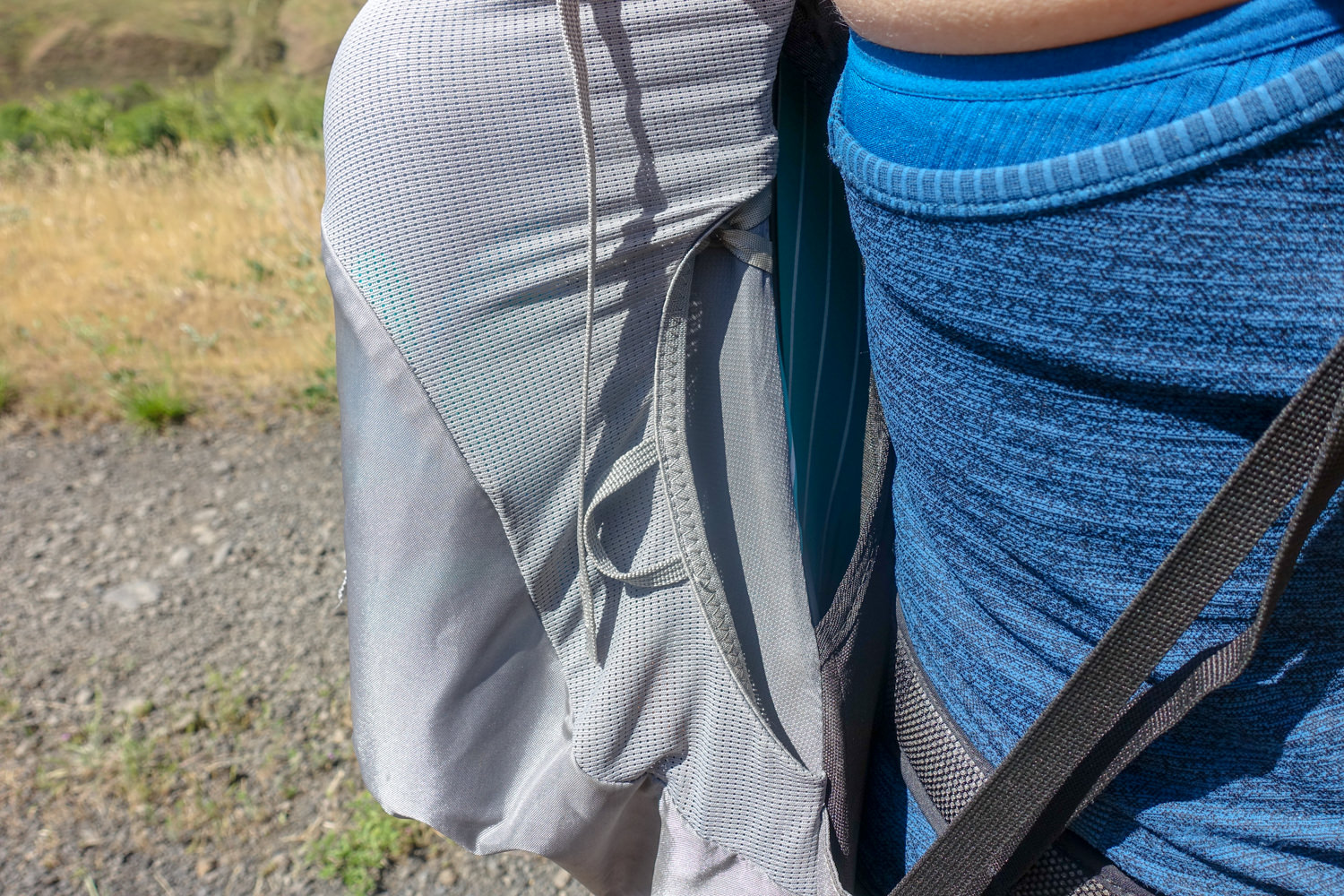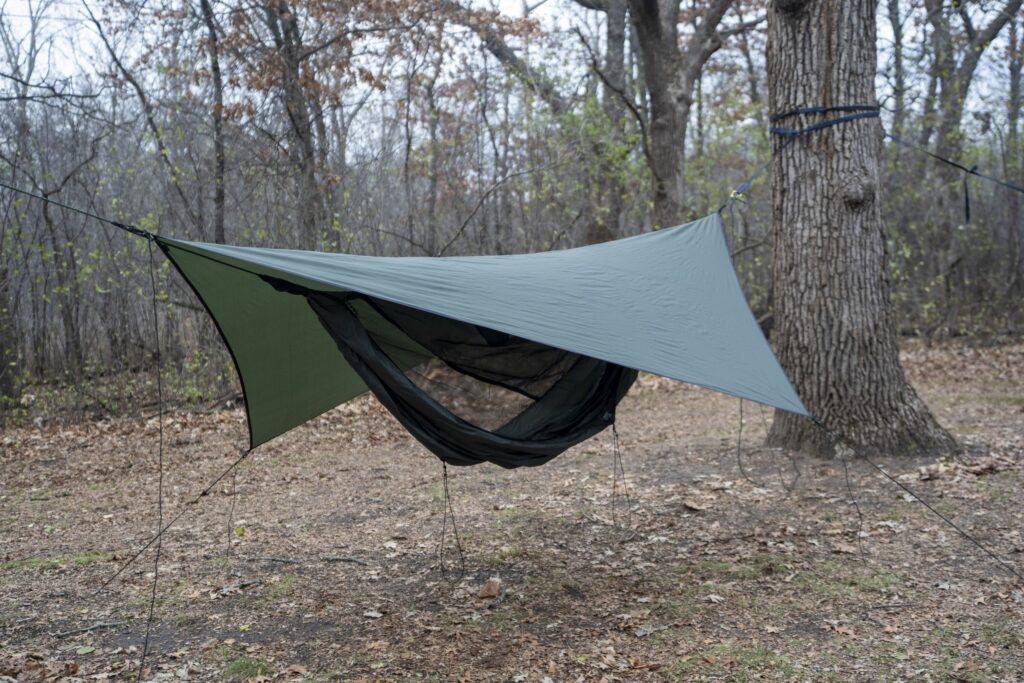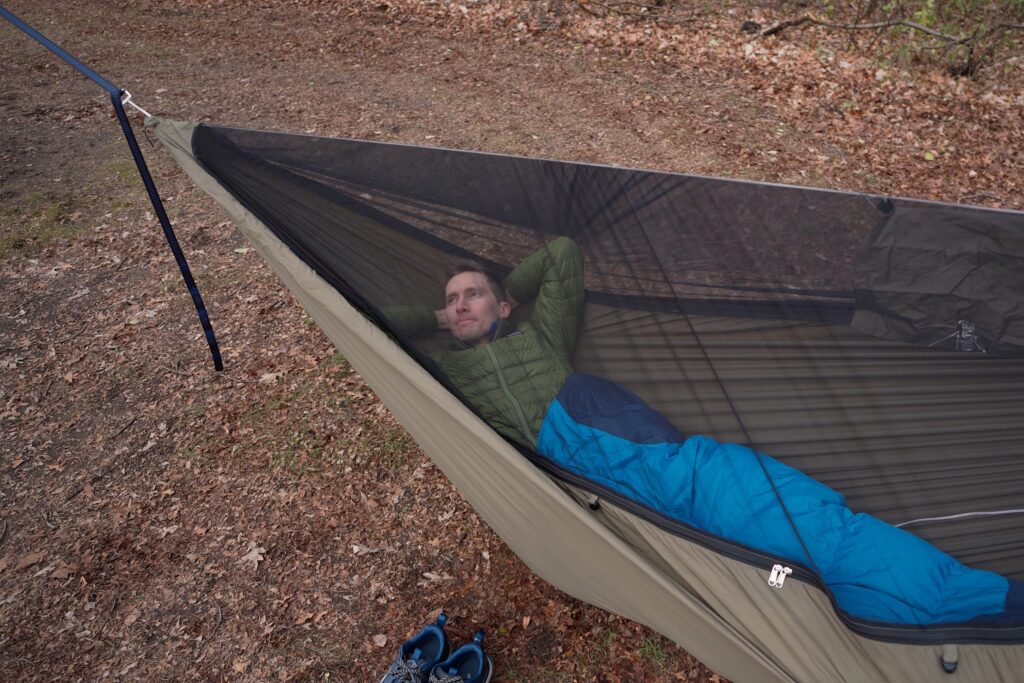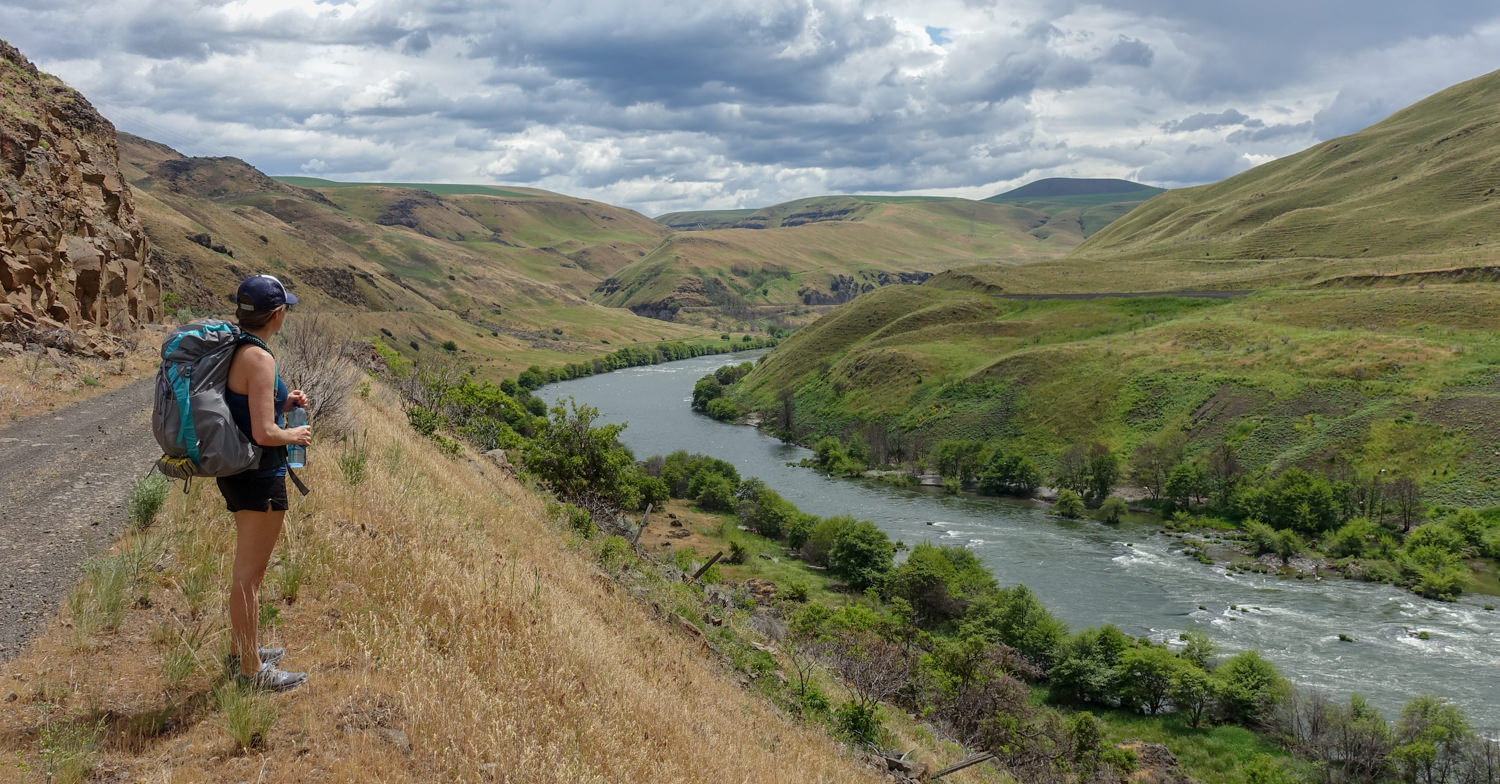
The updated Osprey Exos 48 & 58 (men’s) and Eja 48 & 58 (women’s) are extremely comfortable, lightweight backpacks with great all-around value. The Exos and Eja have a sturdier frame than most lightweight packs, allowing them to carry heavier loads comfortably, and they won’t break the bank either. These backpacks are among the most comfortable we’ve ever tested and they’re a great option for lightweight backpackers. The Exos and Eja are on our Best Lightweight Backpacks list.
Quick Specs
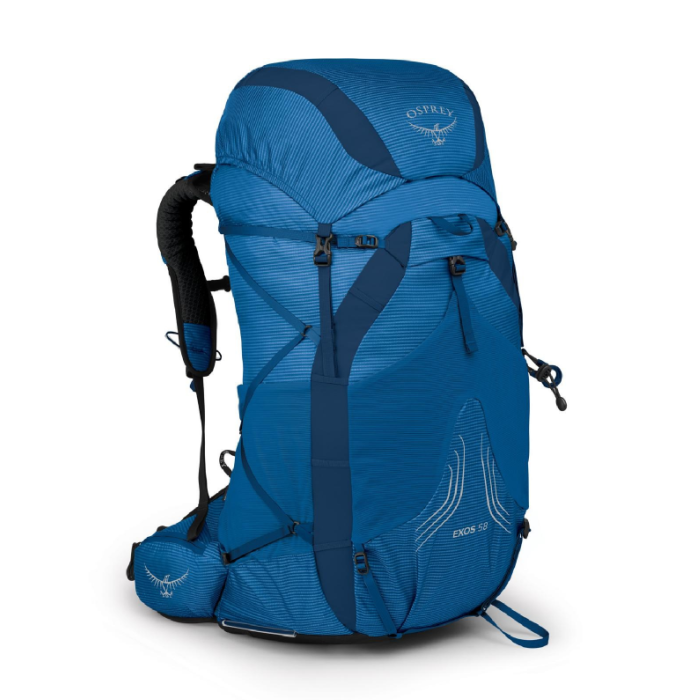
Osprey Exos & Eja Backpack
Price: $240
Weight: 2 lb. 10 oz. / 2 lb. 9 oz.
Capacity: 48 L (Also available in 58 L)
Max Weight Rec.: 40 lb.
Pros
- Exceptionally comfortable
- Affordable
- Back ventilation
- 40 lb. weight capacity
- Adaptive strap system
- Removable top lid
- Different sizes
Cons
- No hip belt pockets
- Difficult to access water bottles
- Aesthetic
- Durability of mesh pockets
Pros
Affordable
With an MSRP around $200, the Exos and Eja are about as affordable as lightweight backpacks get. It’s no wonder that versions of these Osprey packs have been among the most popular in the backpacking industry for so many years. These packs are a very affordable, yet high quality option.
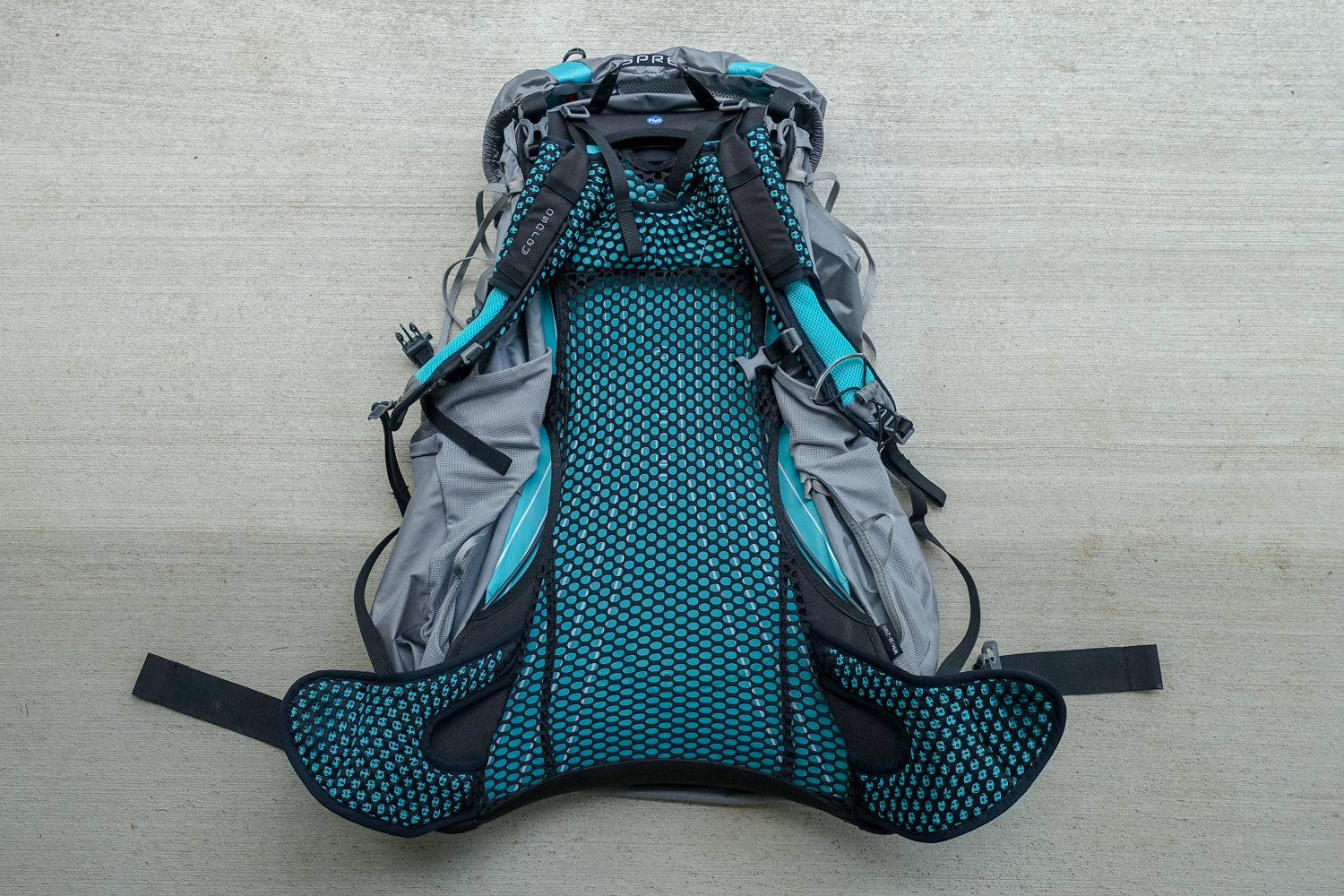
Exceptionally Comfortable
One of our favorite features of the Exos and Eja backpacks is their tensioned-mesh frame, which contours to the back nicely, is incredibly comfortable, and increases back ventilation on the trail. The frame does an effective job of transferring weight to the hips, which relieves the stress from the shoulders for a more balanced, well-distributed load. Both the hip belt and shoulder straps are well-padded and supportive. Due to these features, the Exos and Eja are some of the most comfortable backpacks on the market.
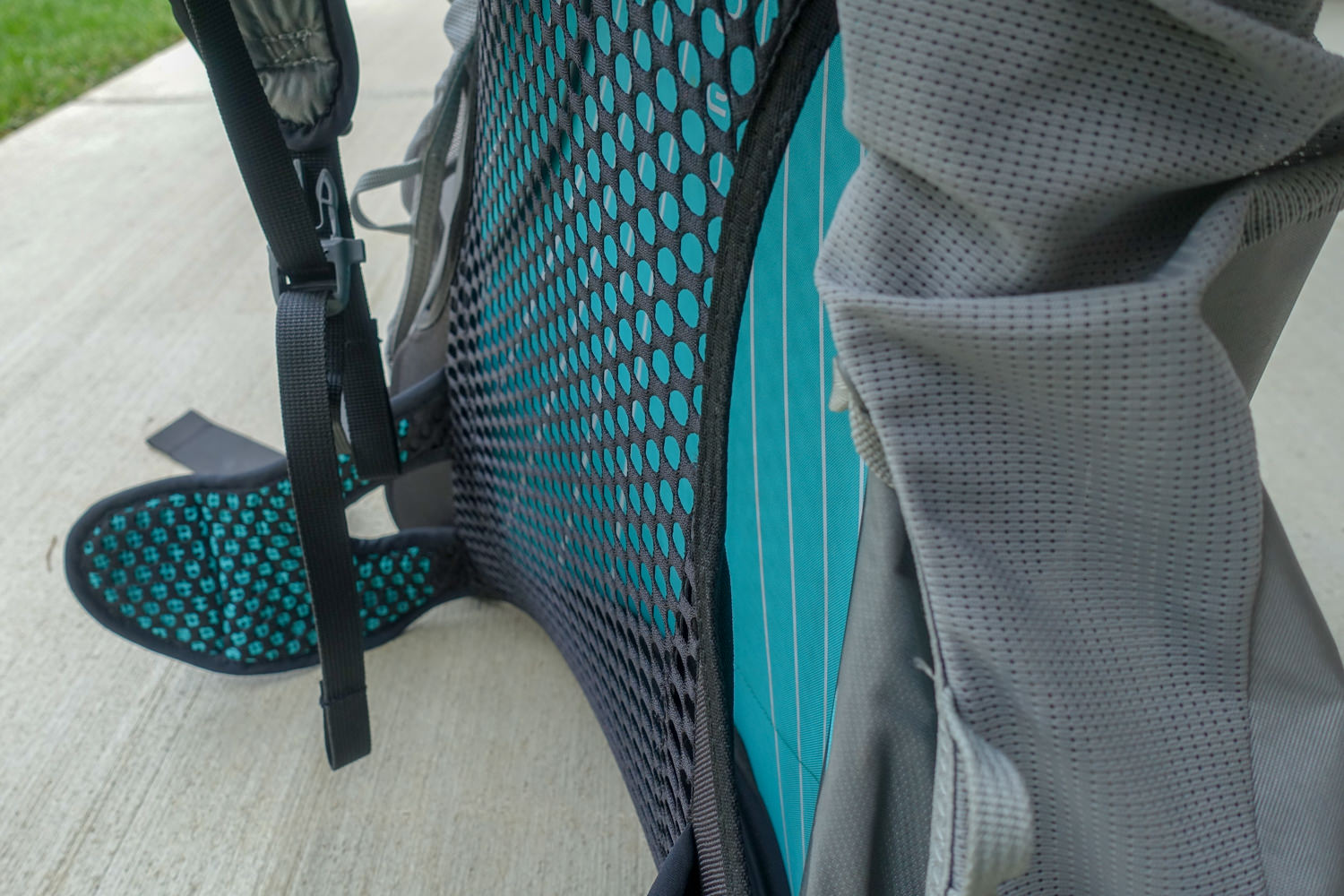
Back ventilation
Whether you have a pack on your back or not, you’ll likely get hot and sweaty when you’re hiking hard or gaining elevation. Wearing wicking clothing that dries quickly and taking off layers as needed will help the most with staying dry and cool, but it certainly helps to have a pack built with breathability in mind too. The Exos and Eja’s tensioned mesh back panel creates space between your back and the body of the pack to allow for ventilation, which is a nice feature.
40 lb. weight capacity
We try to keep our backpacks as light as possible, but there are times when it’s important to know our packs are capable of handling heavier loads without buckling or becoming uncomfortable. On some trips, you may find that you need to carry a lot of food or water to get through a dry stretch, which can put a lot of stress on your pack (and your body). The Exos and Eja have a solid, but lightweight aluminum frame and are capable of supporting heavier loads than most lightweight packs. Most backpacks In the lightweight class have weight capacities ranging from 25-40 pounds. The Exos and Eja can carry up to 40 pounds. comfortably, which makes them a good choice for those who hike light but want to be prepared for heavier loads as well.
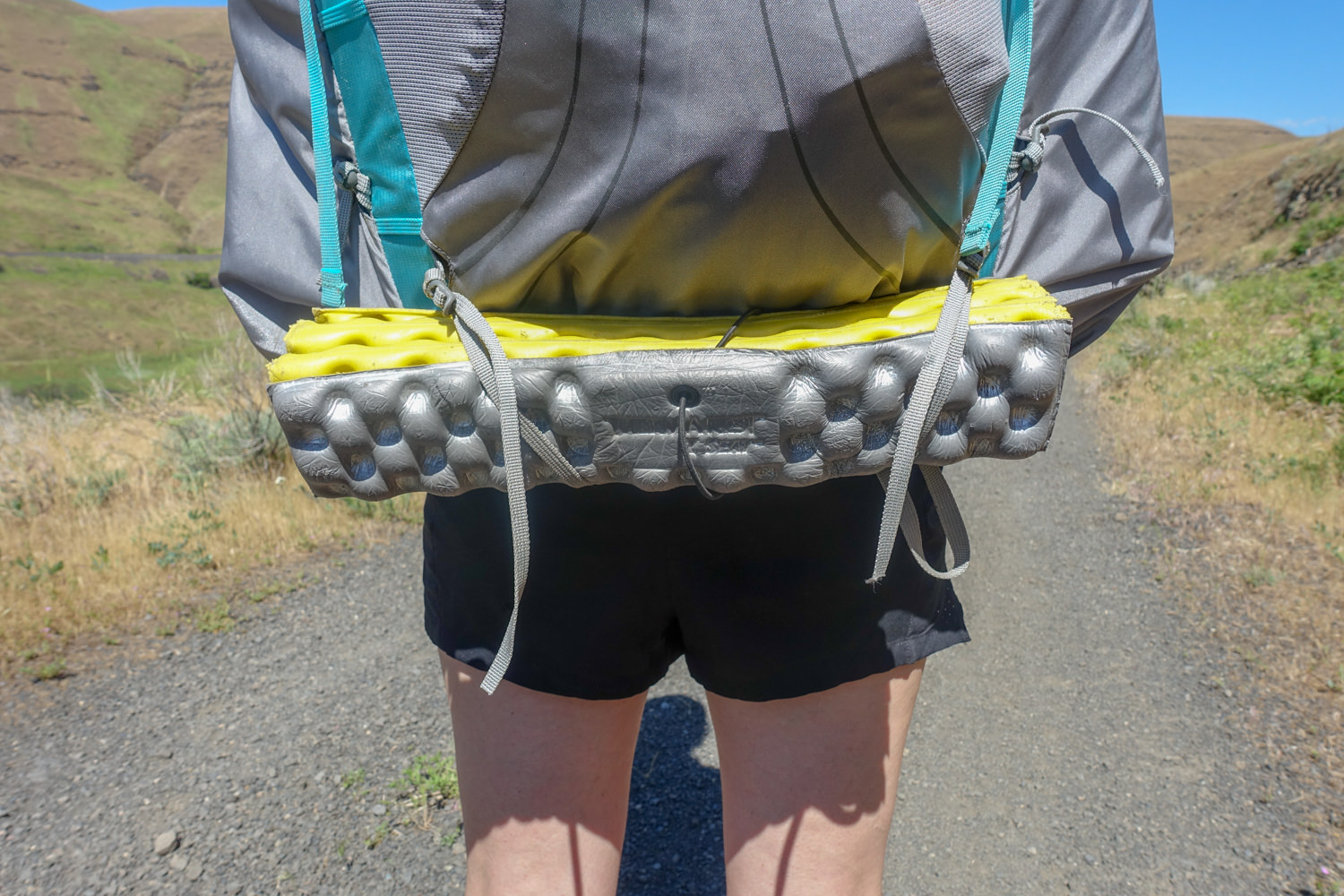
Adaptive strap system
The Exos and Eja have well-designed compression strap systems that help keep them tight and secure with varying load sizes. The compression straps on each side of the pack can be threaded over or under the large mesh side pockets so you can choose the way that suits you best. There’s a strap at the bottom to attach a Z-Seat, ice axe loops on the front, and a trekking pole attachment on the shoulder strap that makes it easy to stow your poles on the go. The Exos and Eja are very “strappy” so you may want to trim some excess webbing to make them look and feel a little cleaner, but it’s convenient to have so many options that can be adapted to your needs.
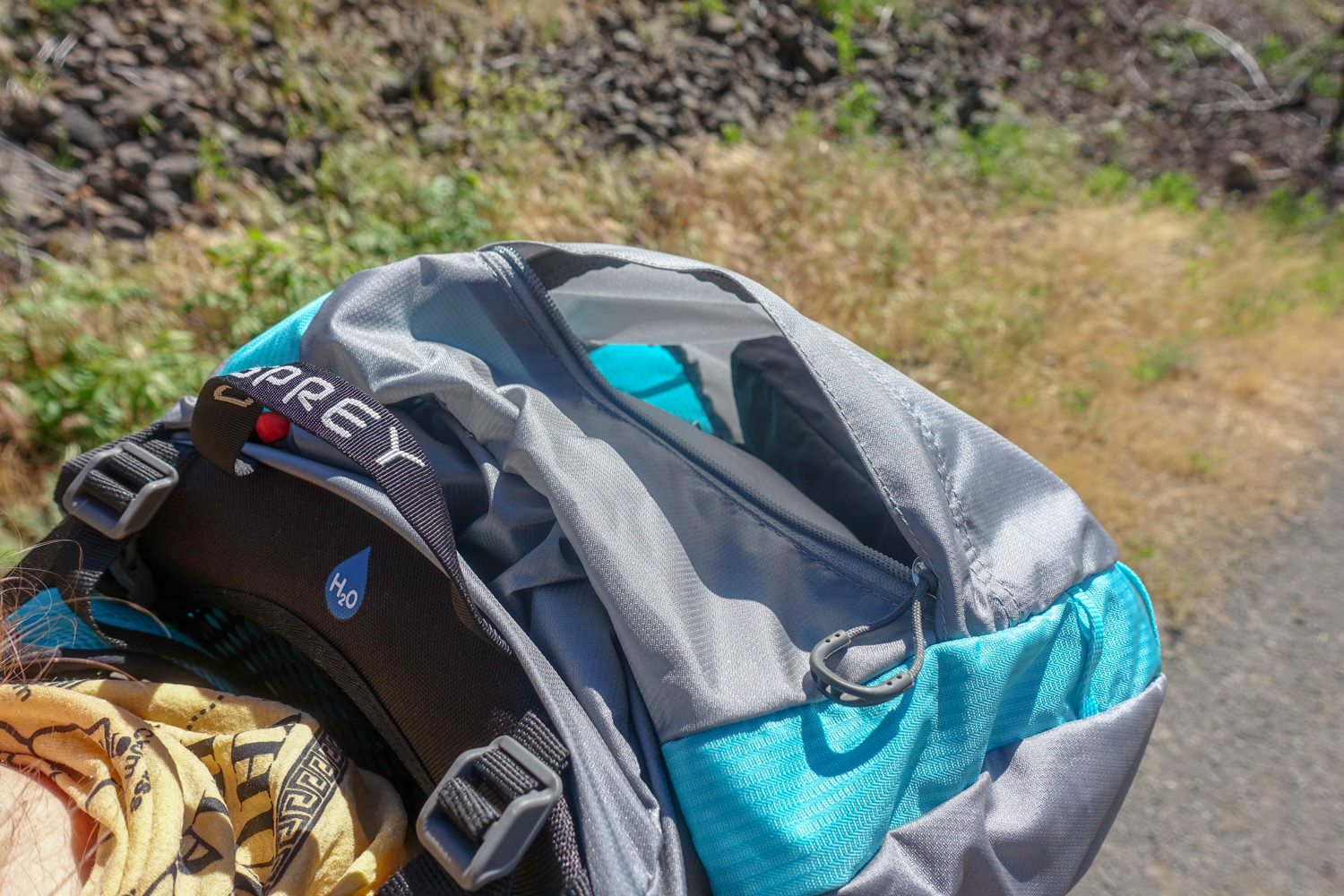
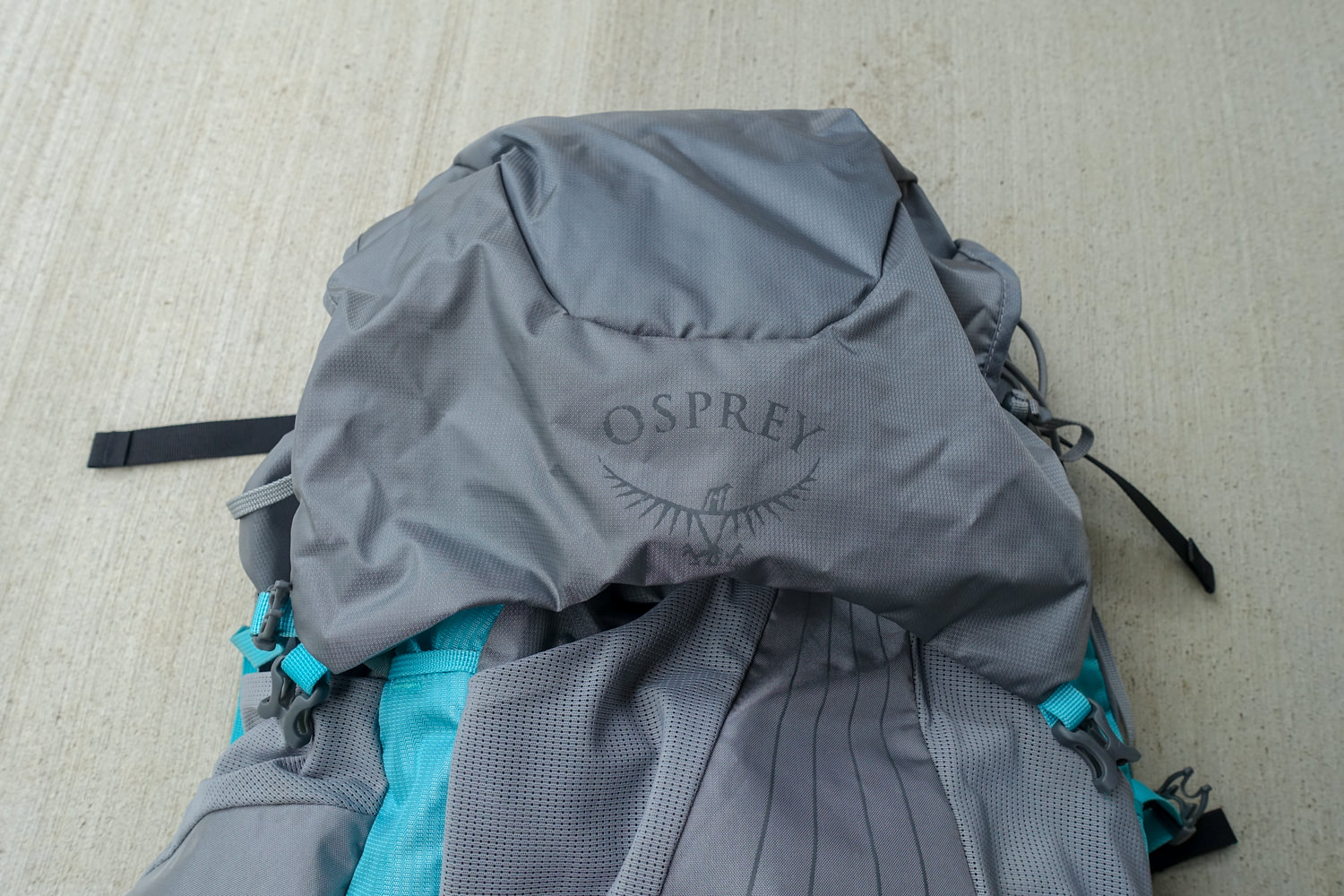
Removable top lid
The Exos and Eja have a “lid” that sits on top of the main pack compartment with zippered pockets to keep small items handy. If you’re like us though, and you generally prefer packs without lids, you can remove it easily and use the sewn-in flap to cover the top instead. We find that lids make it less convenient to access a pack’s main compartment and tend to sag down unless the pack is fully-loaded, but we do know that many hikers like them. Since the Exos and Eja work well with and without the lid, we still think it adds value.
Sizes
We’re drawn to the 48-liter size because we try to keep our backpacks nice and light, but if you’re looking for more space, the Exos and Eja are also offered in a largersize (Exos 58 / Eja 58 ). The upgrade to the 58-liter won’t cost you much, but be aware, it’s really easy to fill a pack that has empty space with stuff you don’t need. If you do get the larger size and don’t fill it, keep in mind that it’s going to look frumpy and less sleek as well. An unintended positive consequence of having a backpack with limited space is that it forces you to be more cognizant as you’re packing. If you use a lightweight backpacking checklist to keep your gear light and minimal, you should have no problem using the 48-liter Exos and Eja for the average 3-5 day trip. For those that have their gear really streamlined, the 48-liter will even work for 6-7 days.
Cons
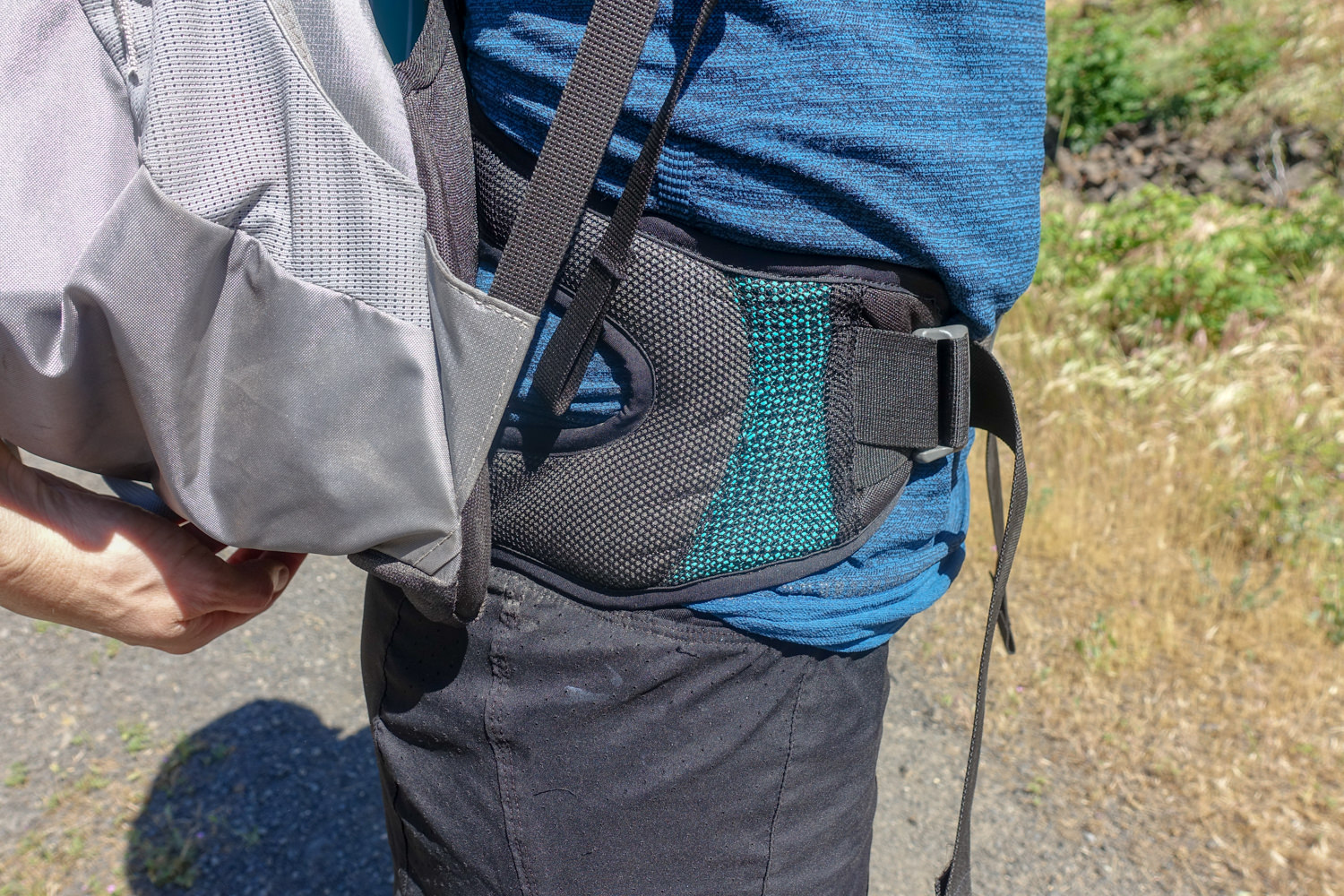
No hip belt pockets
Our biggest complaint with the current model of the Exos and Eja is the lack of hip belt pockets. We spend a lot of time on the trail, so we like to have quick access to items like our cell phones (for GPS), cameras, sunscreen, chapstick, hand sanitizer, and snacks. Without hip belt pockets, we have to take off our packs every time we need one of those items, which quickly gets annoying. You can supplement your pack with aftermarket Pack Pockets, but those tend to slip off and become cumbersome to readjust when you take your pack on and off. Really, we think the Exos and Eja should have hip belt pockets since most people find them very useful.
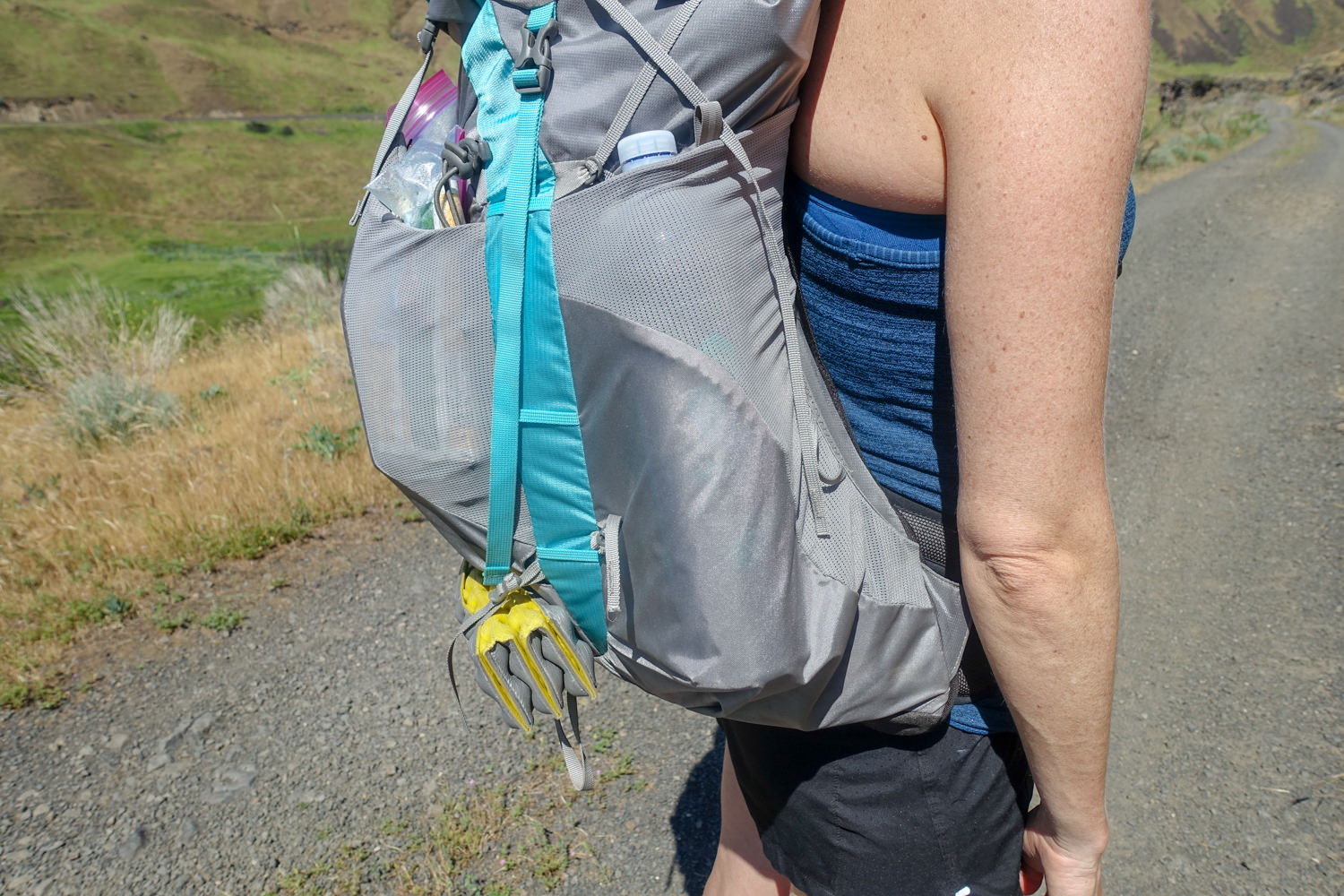
Difficult to access water bottles
The water bottle pockets on the sides of the Exos and Eja are high and secure, which means your bottles won’t fall out when you bend over, which is great. But that also makes getting your water bottles in and out a little tougher than it should be. Since accessing water is something you’ll do constantly on the trail, it’s important for it to be easy and convenient to reach. If you hike with a companion, perhaps they’ll lend you a hand reaching your bottles or you can try adding some Shoulder Strap Bottle Pockets. The Exos and Eja are compatible with hydration reservoirs, but generally, we prefer to use Smartwater bottles. Hydration reservoirs do make it easy to drink water without stopping, but they’re heavier, more expensive, tougher to access for refilling, harder to gauge how much water you have left, more work to clean, etc. At the end of the day, we just wish the water bottle pockets were easier to access on the Exos & Eja.
Aesthetic
It may be superficial, but stylistically we think the Exos and Eja are a bit frumpy looking, especially when they have the top lids on and aren’t completely full. They’re a bit wide and don’t have the clean, sleek look that some of our favorite backpacks do. Does this limit their functionality? Not at all, but it still does matter to us.
Durability of mesh pockets
The large front pocket and side pockets of the Exos and Eja are very convenient and have been reinforced better than they were in past models, but the mesh still isn’t very durable. This type of mesh tends to stretch out and develop holes with extensive use. The Exos and Eja should still last a good long time if handled with care, but users should expect to repair some small holes in the mesh over the long-term.
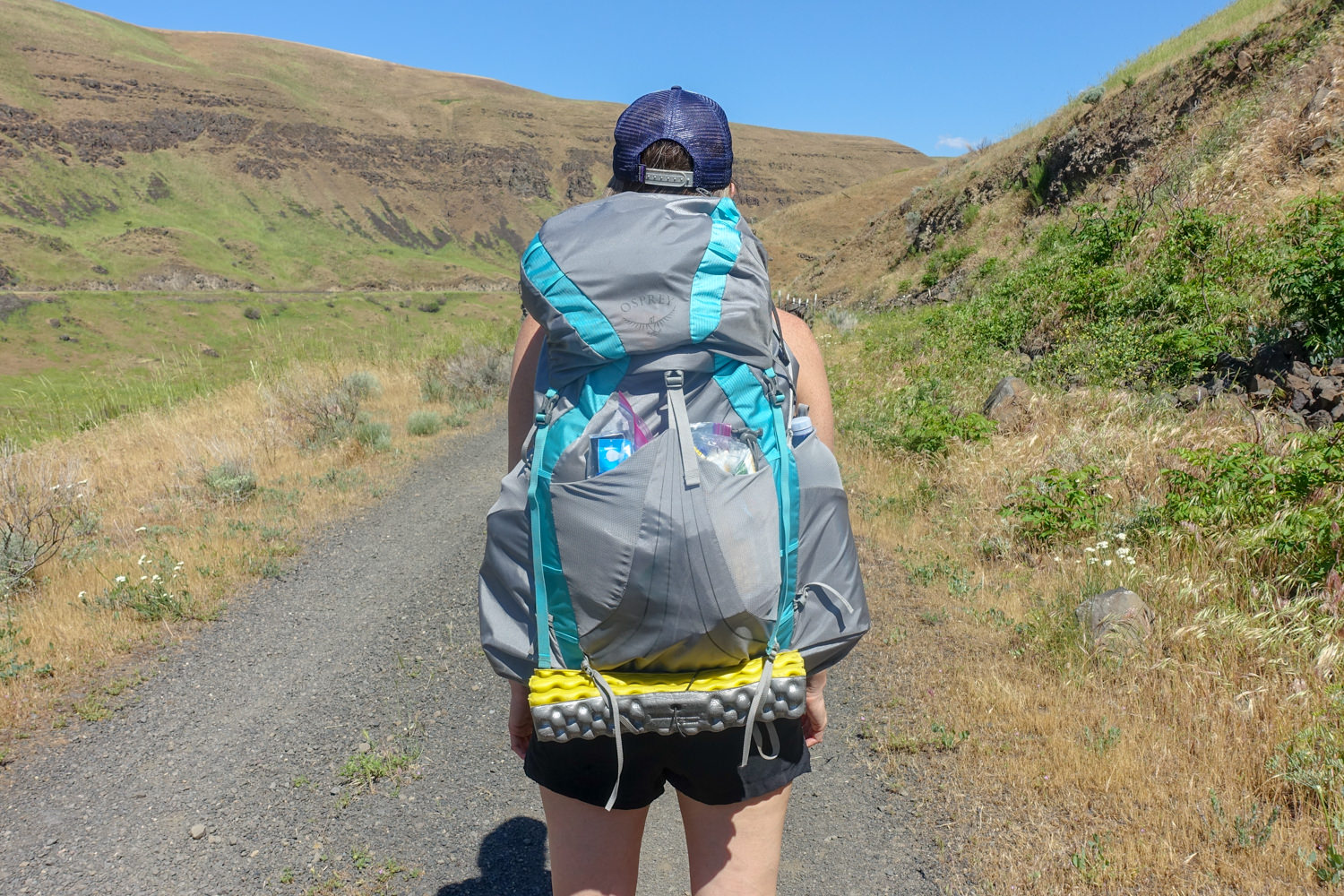
Bottom Line
Overall, the Osprey Exos and Eja have a few quirks and downsides (mainly that they have no hipbelt pockets and slightly tough to access water bottle pockets), but if comfort is your main concern, these packs among the very best. Their strong frame, tensioned-mesh back panel, and higher-than-usual weight capacity make them capable of handling significant loads while still maintaining an excellent level of comfort. The Exos and Eja are some of the highest quality lightweight backpacks you can get at an affordable price.
Check out our list of the Best Backpacking Packs to see how the Exos and Eja compare to the competition.


